The Wildebeest Migration Guide
month by month
Sensational show
The Wildebeest Migration is the most sensational show on earth. But just by booking a safari to Serengeti National Park does not guarantee a front-row seat. Timing is everything. You have to be in the right place at the right moment. This migration guide will help you to work out where and when to go.
The direction and route of the migration herds highly depends on the rainfall. Due to the global climate change, the annual pattern might vary slightly each year. Generally the following route can be used.
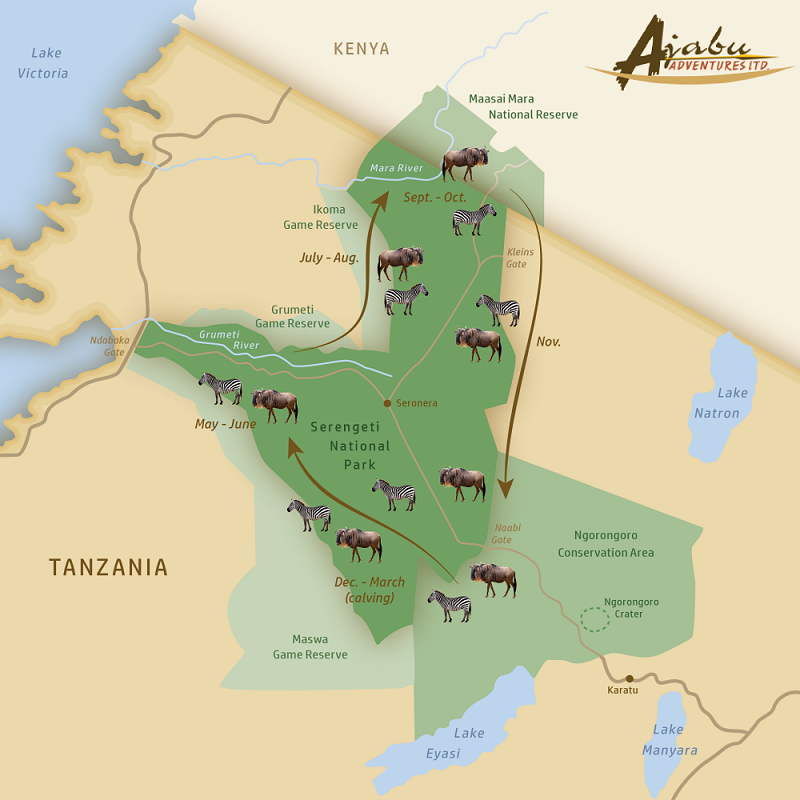
December - January
In December the majority of the wildebeest herds have reached the southeast of the Serengeti. They arrive from a long and tiring journey from the far north of Serengeti National Park or even the Masai Mara in Kenya and are now ready to settle for a while.
Dispersed across the plains of southern Serengeti, Ndutu and the north of the Ngorongoro Conservation Area, the wildebeest and zebras are everywhere, feeding on the fresh nutritious grass.
Where to stay?
Ndutu region, stretchting from the western part of the Ngorongoro Conservation Area to southern Serengeti National Park. Apart from staying in the south, we recommend spending also at least one night in central Serengeti for spectacular encounters with big cats like lions, leopards and cheetahs.
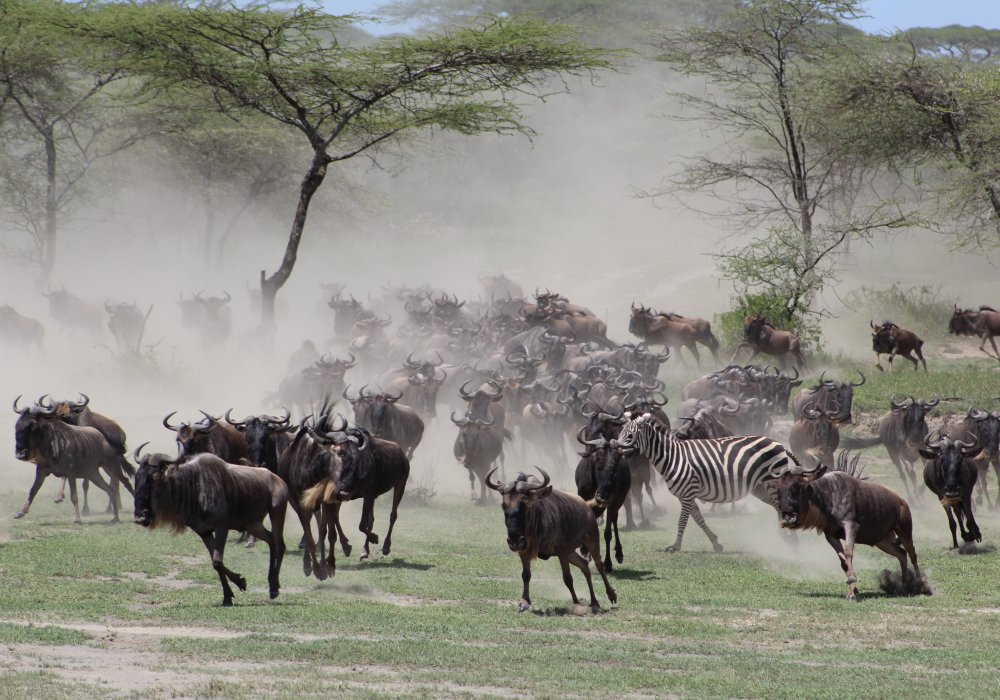
February - March
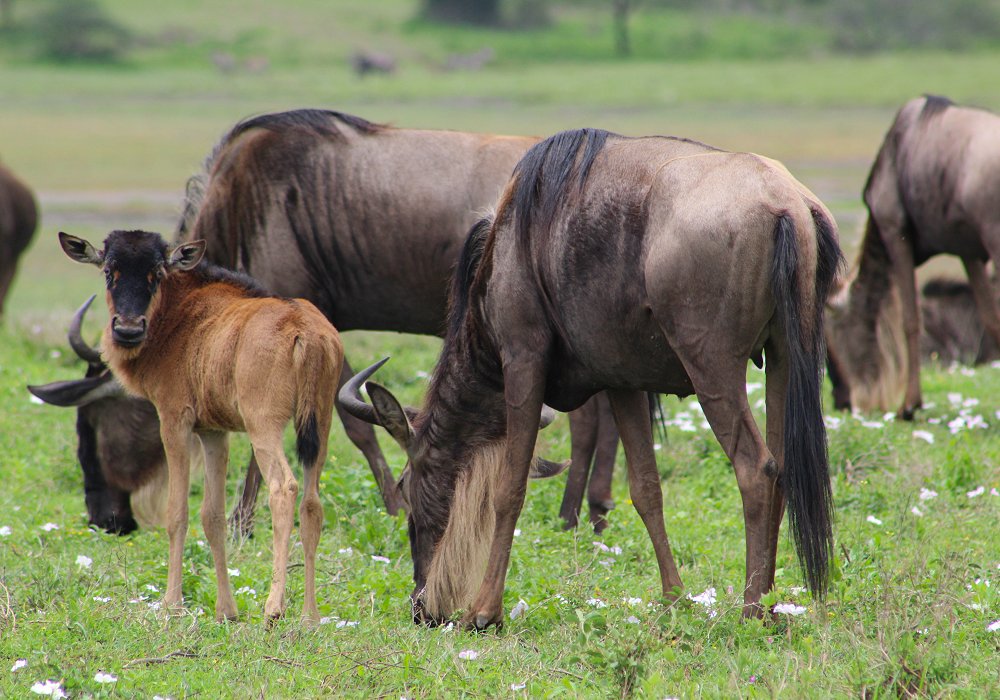
Still remaining in the south of the Serengeti and Ngorongoro Conservation Area, the migrating herds tend to give birth in February. Within just two to three weeks over 500,000 calves are born. You can imagine that, when visiting the south in this period, chances of witnessing a wildebeest birth are high!
But even if you miss out, the view of hundreds of thousands tiny wildebeests and zebras dotting the plains is more than worthwhile. The calcium-rich soil is the perfect nutrition for the mothers and their babies. However, the sudden presence of all these young calves also attract a lot of predators to feast on the easy prey.
Also in March, the migration remains in the south, giving the young ones a chance to get stronger. But as the plains dry out and the rains are about the start, the herds are jointly preparing their move towards the north.
Where to stay?
Ndutu region, same as in December - January.
April
By the end of March or early April, the long rains make their appearance which is a sign for the migration to get going. They move slowly with their young calves from the south to the west, passing the southern part of central Serengeti.
Where to stay?
South/western part of the Serengeti. The regions of Simba Kopjes, Moru Kopjes and Kusini Hills are excellent places to view the gigantic herd, but they are also known for their big cats populations. In addition, in this time of the year safari accommodations in central Serengeti (Seronera) make an excellent base as well.
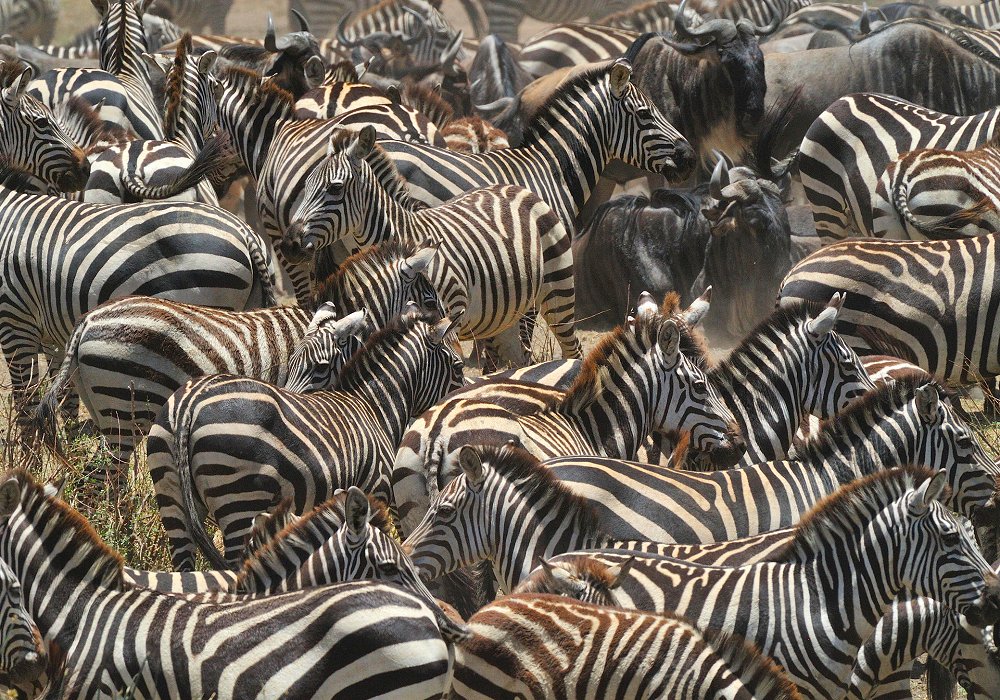
May - June
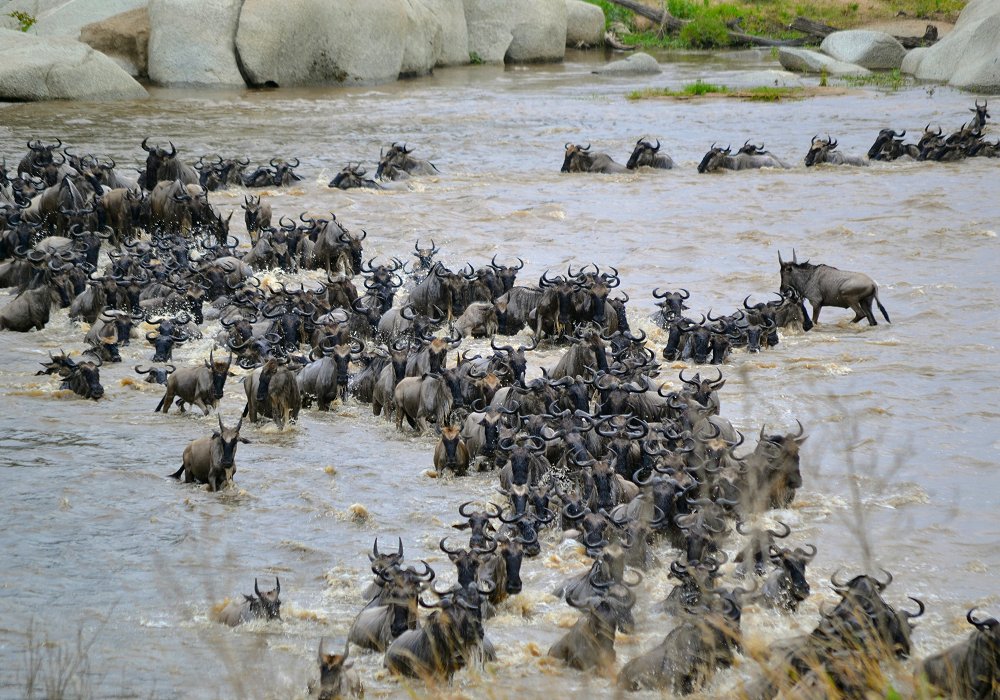
The journey continues to the west of the Serengeti, into the “Western Corridor”. This is the most western part of the Serengeti that extends almost into Lake Victoria. The herds gather speed and cover bigger distances each day. On their way they have to cross the Mbalageti River first and then the Grumeti River.
June is the end of the rainy season and the plains are lush and green. Having crossed the Mbalageti River without too much trouble, a second challenge is waiting: the Grumeti River, that runs parallel but further to the north. The first real barrier to take for the young calves!On the southern side of the river the animals stop and rest for a while. They wait for each other before they cross the river with as many as possible.
The Grumeti River crossing is sensational and you can feel the tension as the animals get prepared. The crossing is certainly not without danger due to the many crocodiles that need to be defied. And this is only the beginning! Having reached the other side safely, they get ready for the long trek to the north.
Where to stay?
Western side of the Serengeti and Grumeti Game Reserve. Again, also safari lodges in central Serengeti are suitable alternatives as well.
July - August
By July, the trek moves towards the north of Serengeti National Park. In a herd of over one million migrating animals they trek in a column of up to 40 kilometers long. The migration might leave the park boundaries and enter into Ikorongo Game Reserve, before returning and approaching the Mara River. The crossing of the Mara River is considered by many the most exciting events of the Great Migration! Watching the frantic herds of the wildebeest migration navigate their way through the Mara River is incredibly spectacular; there are often scenes of great panic and confusion.
Just like at the Grumeti River, the animals congregate on the southern banks of the river. The tension builds up as they hesitantly choose the best spot to cross. A few may back out and decide to stay on the southern side of the Mara. Even if there is not much movement yet, you might feel so nervous as if you were one of them.
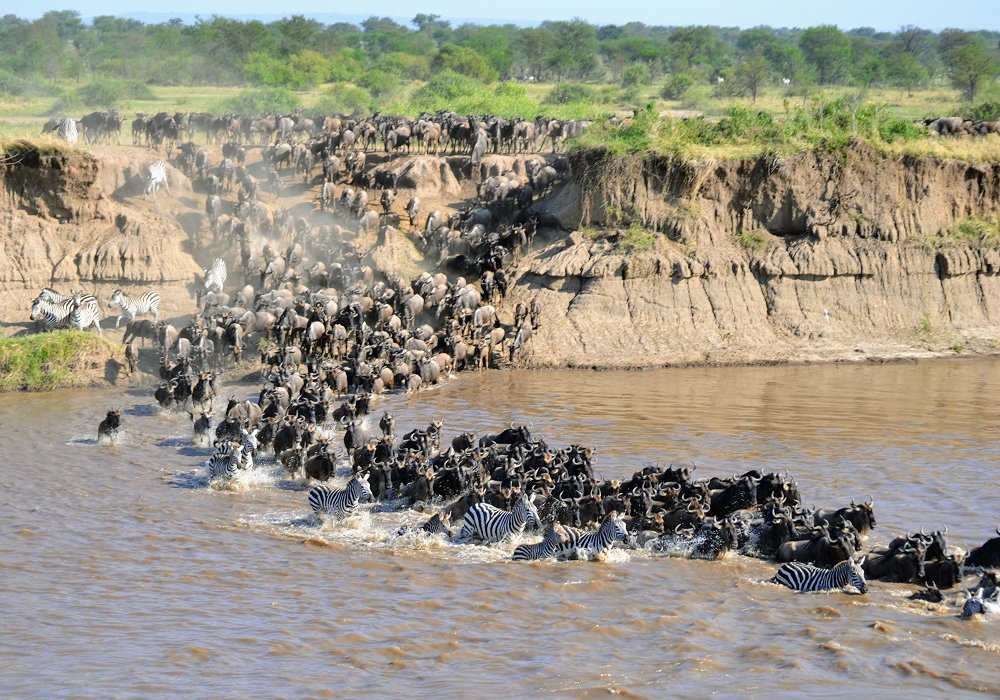
The crossing is dramatic and unpredictable. It is a survival of the fittest, as animals might slip on the wet rocks or be trampled by others. And of course all the time hungry crocodiles are waiting patiently for an easy meal. The entire process of the river crossing takes a few weeks, though it is difficult to predict as timing all depends on the rains and the behavior of the wild animals.
Where to stay?
Northern part of the Serengeti and near the Mara river, including the Lamai area on the northwestern side.
September - October
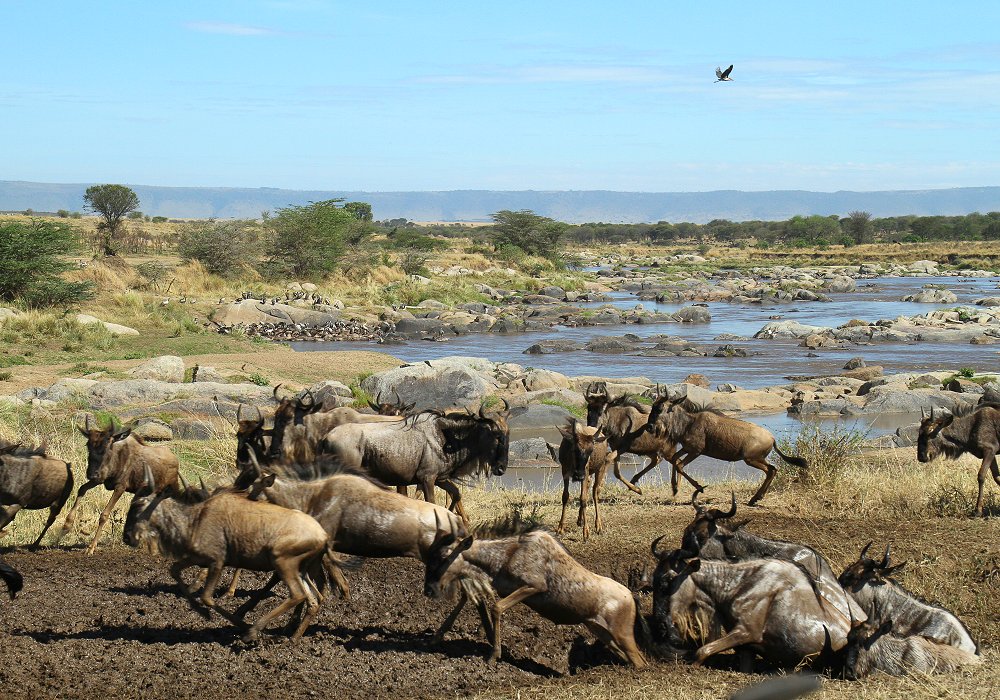
Daily river crossings still might happen in September and even in October. It is even common to see herds cross the Mara River north on one day, and then back south a few days later.
Having reached the other side of the Mara River safely, the wildebeests and their companions can enjoy lush green grass and a well-deserved break. The herds spread out in both northern Serengeti and the Masai Mara National Reserve in Kenya, with open woodlands and hills that dominate the landscape.
By the end of October, the wildebeest herds start gathering again for their long trek to the south. It has been hot and humid and they are going to central Serengeti in search of the fresh green shoots, that appear thanks to the short rains of November.
Where to stay?
Northern Serengeti, including Lobo area on the northeastern side.
November
Hundreds of thousands of zebras and antelopes join the wildebeests and move towards the plains of the Ngorongoro Conservation Area. They pass the eastern side of the Serengeti, through western Loliondo and Lobo area, then central Serengeti and continue southwards. This is a good period to see the migration on the move as they travel fast and cover long distances in one day. The animals can move all the way from Lobo to Ndutu in just a few days!
By December most of the migrating animals have reached the southern plains again. And the migration starts a new cycle.
Where to stay?
Eastern and central part of the Serengeti as the herds will be moving relatively quickly and can cover quite a distance per day.
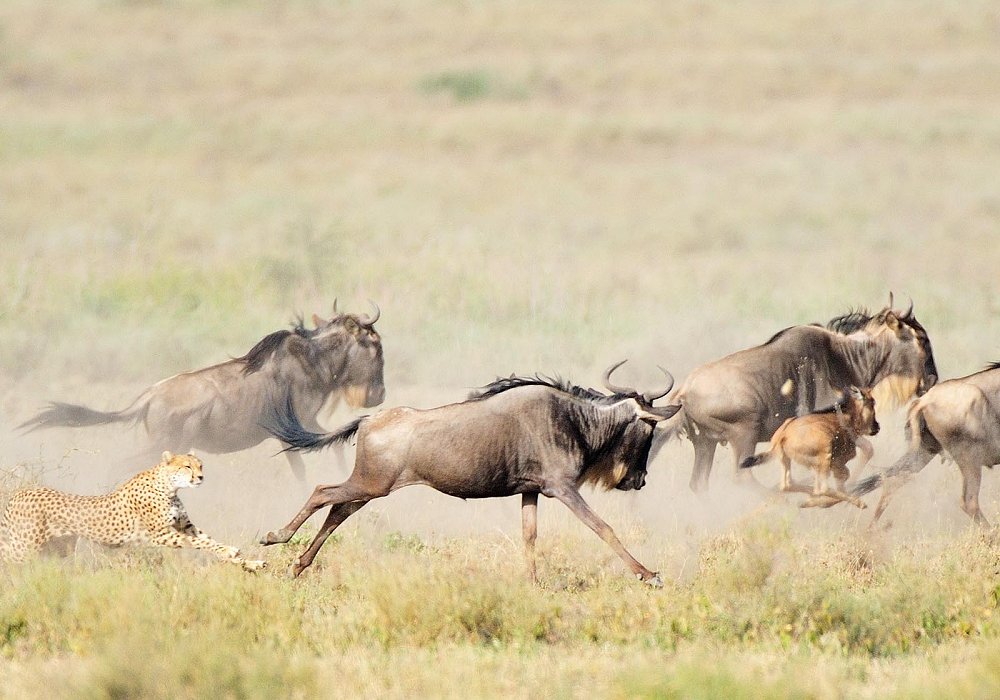
Keep in mind that it is not always easy to trace the herds. This is due to the changing migration pattern, the huge surface area of the Serengeti and the migrating animals that move outside the park. During your safari, your guide will do his very best to follow the migration and bring you there where the migration is best observed.
